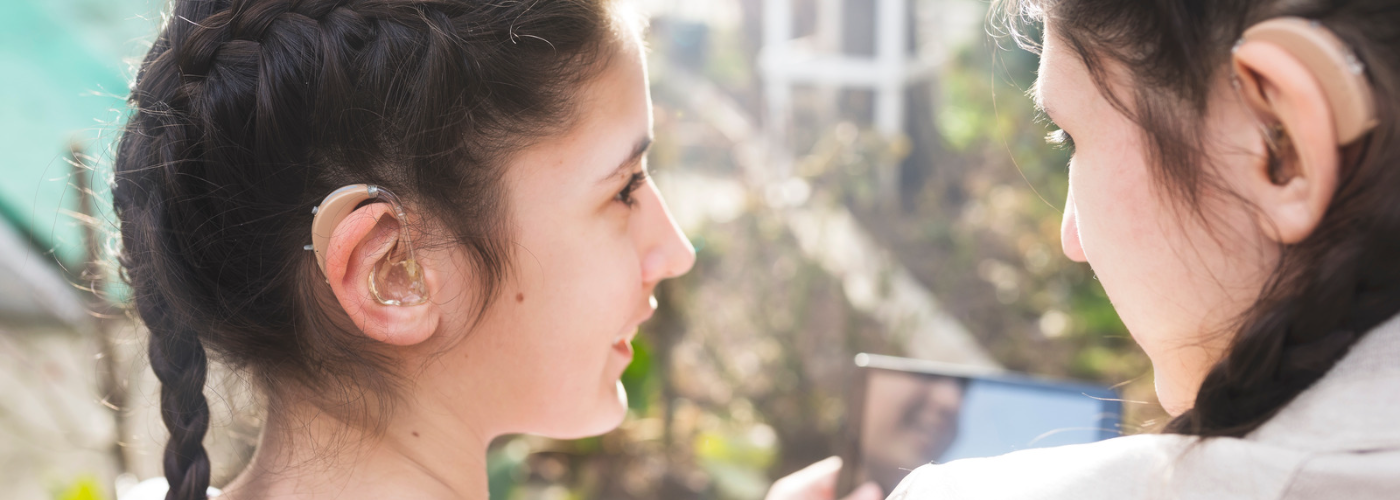Home » Resources » Access & Accommodations » Assistive Listening Systems
Assistive Listening Systems
Assistive listening systems (ALS) provide deaf students with direct auditory access to spoken information. ALS can be used with or without personal devices (such as hearing aids or cochlear implant processors).
Assistive listening systems is the term commonly used in the Americans with Disabilities Act. They also can be referred to as hearing assistive/assistance technology (HATS), assistive listening devices (ALDs), or assistive technology.
Watch this video to learn more!
Full Video Description: https://tinyurl.com/trhthfo

Assistive Listening Systems and the ADA:
Providing Assistive Listening Systems and Devices for Deaf Students
Institutions are required to provide assistive listening systems as an auxiliary aid for effective communication access. This includes the acquisition of assistive listening systems that are compatible with student’s personal devices and installation of induction loop systems in large spaces.
Why Do Some Deaf Students Benefit from Assistive Listening Systems?
Some deaf students use listening technologies, including personal devices and assistive listening systems. Results from a nationwide survey of deaf college students’ experiences and perspectives of access and inclusion on campus found that about 9% of students reported use of assistive listening systems, but this may be an underestimate.
Personal devices such as hearing aids, cochlear implants, and bone-conducted hearing devices provide acoustic access to deaf people. Personal devices support deaf people in a variety of ways. For example, some deaf people can use these devices to communicate on the phone or to receive more information about environmental sounds. It is important to note that not everyone will experience the same benefit and that not every deaf person uses personal devices.
Even with personal devices, a deaf person might still experience barriers to high quality acoustic access and communication. While personal devices provide increased access to acoustic stimuli, the goal of assistive listening systems is to improve the quality of that signal over barriers that might impede it. These barriers are commonly background noise, reverberation, or distance from the sound source. Similar to how noise-canceling headphones help eliminate distractions, assistive listening systems improve acoustic access for deaf students. For example, a deaf student may request an assistive listening system for a large lecture hall to better access their teacher.
FM/DM systems are specifically designed for classrooms. They dynamically respond to the environment.
Bluetooth devices do not yet have this ability.
Assistive listening systems are not universal, in other words, and are not always compatible with every personal device. Some students can connect these systems directly to their personal devices and others require additional components such as third-party devices. Media options are available; some deaf students may request that a device be plugged into computers, or tablets to access media in the classroom directly.
Student & Institutional Responsibility
Personal Devices
- While personal devices are the student’s responsibility, institutions can:
- Encourage students to get an updated audiological exam and connect them with financing options (for example, VR or Lion’s Club).
- Provide general use headphones at campus computers to improve direct auditory access to media.
- Maintain device battery level, either by charging devices or with disposable batteries.
- Communicate what works best for them to DSS, audiologists, faculty, etc.
- Discuss with their audiologist about maintenance and device pairing capabilities.
Assistive Listening Systems
- Acquire assistive listening systems that are compatible with each student’s personal devices.
- Adhere to ADA recommendations for large spaces and venues.
- Clarify policies and procedures to the student about use of their ALS, including:
- How to request more batteries
- What to do if the device stops working
- How to report if the device is lost, damaged, or stolen
- Use of device off campus
- Perform routine checks and maintenance on existing ALS and consult with an independent audiologist or assistive listening system manufacturer when purchasing new devices to ensure your institution is investing in current technology.
- Follow the accommodations request protocols of the institution.
- Keep the equipment safe and damage-free.
- Follow the borrow and return policy of your institution.
- Communicate openly with DS providers and faculty about how they can best support implementation of the ALS.
- Discuss classroom preferences with faculty ahead of class time, including:
- How to handle questions during lecture
- Most effective way to watch videos in the classroom
- How to handle small group discussions
- Make sure equipment is charged for class time, or other intended use.






